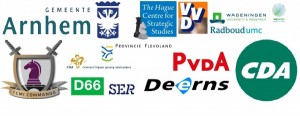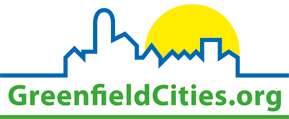 In the first half year of 2016 we had about 100 meetings with stakeholders of the migration crisis. The results were twofold: (1) the views about our solution were predominantly positive and maybe more importantly even (2) we learned a lot discussing our initiative.
In the first half year of 2016 we had about 100 meetings with stakeholders of the migration crisis. The results were twofold: (1) the views about our solution were predominantly positive and maybe more importantly even (2) we learned a lot discussing our initiative.
“I clearly remember one of the first times I discussed our presentation with Leen Verbeek, Flevoland’s high commissioner of the King” recalls Arie van Beek, co-founder of GreenfieldCities, “He started with giving historic lessons about the coming into being of the borders of the current Middle Eastern states. It made me double aware of the complexity of the situation and the necessity to include (or start from) the Middle-Eastern and North African perspectives. That’s not one perspective, that is many” he said.
Almost all thought it was a groundbreaking concept: using refugees here to develop good plans for sustainable urban regions there, with many challenges ahead. Though Rob de Wijk (The Hague Centre for Strategic Studies) embraced the idea, he pressed home the message: “the business case from a Western perspective is rock solid, however the business case for the host country needs to be made! Without it GreenfieldCities will not get the support it needs.”
Tom Middendorp, our Army General-in-chief said “the migration crisis and the climate change (which is fueling it) are the biggest threats to national and international security”. Joris van Esch, former commander of 1 CMI of the Ministry of Defense had his reservists company help exactly building that business case for Jordan. For us it came as a surprise how many fields of expertise are avalaible: economists, energy specialist, arabists, psychologogists, all very useful in drafting the business case. What van Esch liked about GreenfieldCities was the long-term commitment. “In Afghanistan we have helped build up something substantial, but we couldn’t stay there for the long run. The moment we announced we would leave, things gradually started falling apart”.
Member of Parliament, Sjoerd Sjoerdsma underlined that in his view we had to start with something tangible and start relatively small. The idea of a pilot in the shape of a Cleantech campus near the Zaatari refugee camp was born.
Last not least: we needed to check what refugees themselves thought about our ideas. During a meet and greet organized by Radboud UMC we were able to talk with them and hear firsthand what they thought: they responded enthusiastically to our plans. We asked them as well: would you consider going back to build a GreenfieldCity yourself? Or become a citizen? Provided sufficient safeguards in place they indeed would go back to the region. Obviously, remigration is not the main goal of GreenfieldCities. But it is a useful by-catch.


